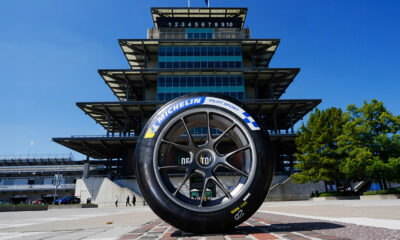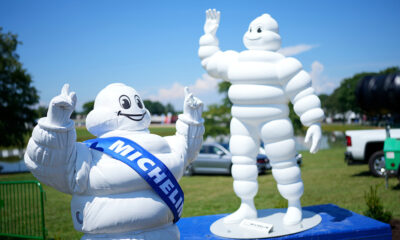
Photo: Michelin
Speaking at an SAE International Motorsports banquet several years ago, BMW Team RLL’s Bobby Rahal recounted how early in his career the driver was the only source of information and feedback to the team.
The driver and crew chief would rely on prior experience, “well, remember that time at Mid-Ohio that we tried such and such,” in determining next steps.
Rahal recalled a large analog gauge being strapped to the nose of his team’s first IndyCar. A sensor was installed and Rahal made repeated straight-line runs up and down an Ohio technical center site to gather data.
There was no recorder. He had to remember where the gauge’s needle was on each run as the team’s new race engineer, Lee Dykstra, tried to locate the car’s center of pressure more precisely.

Photo: BMW
Swimming in Data
Engineers live on data. The more data they have the better they like it. Today, IMSA teams can monitor hundreds of functions several thousands of times per second.
Which brings us back to Watkins Glen.
Where teams typically have an hour or two to assess data between on track sessions, before they head home for post-race reviews and preparations for the next race, they now have three full days before returning to the same Watkins Glen circuit.
Affectionately and respectfully called “geeks,” the IMSA manufacturer and team technical leaders, like performance engineer James Stevens of Turner Motorsport (pictured above), now virtually swim in data. The challenge is in interpreting and deciding which data to prioritize.
Michelin engineers will also be busy as they analyze tire data and vehicle dynamics data provided by teams.
With terabytes of engine, electronics, and performance data plus subjective driver feedback from the first weekend at Watkins Glen, the IMSA cars and drivers will return to the track on Thursday for Friday afternoon’s Michelin Pilot Challenge and that evening’s IMSA WeatherTech Championship events.
The challenge is in interpreting and deciding which data to prioritize. Someone may very well win this weekend thanks to their engineers’ data analysis earlier this week.

Photo: Michelin
For example, with cars in both the Michelin Pilot Challenge and the WeatherTech GTD class, Turner Motorsport uses both fresh and historic data in preparing for the two Watkins Glen events.
“We had a problem in the first practice on Friday and since we didn’t race here in 2020, we went back to our 2019 data. This is our fifth year with the car, so we have a lot of data. Being here with a new car would be a lot of work,” said Stevens.
“The second weekend is a short event with just one practice so moving forward it is important for us to have collected as much data as we can on the first weekend.”
Lee Willard, the Michelin engineer with Corvette Racing (pictured above), believes that one of the biggest opportunities for teams will be using the data to refine traction control and work to improve cars’ overall balance.
Hans Emmel, the Michelin IMSA WeatherTech Championship series manager says the biggest variable will be the weather. Will it be cooler? Wet? Will Friday evening’s track temperatures drop or remain constant?
“Weather dictates everything,” said Stevens.
News & Notes:
***The IMSA Prototype Challenge class will join the Watkins Glen week-two activities. While they will want to maximize their own data, some teams can also rely on the LMP3 data and feedback from the first weekend.
***Many WeatherTech Championship teams used a third driver for the six-hour race, but will return to two drivers for the standard duration race this weekend.
***At two hours and 40 minutes, the race duration is less than half as long, so teams and drivers will likely be even more aggressive on chassis setups and race and tire strategies.
***The race duration is not the only change. While the six-hour race started late morning and ended late on Sunday afternoon, the start time for this race is at 6:10 p.m. and the end at 8:50 p.m., just a few minutes before official sunset.


























